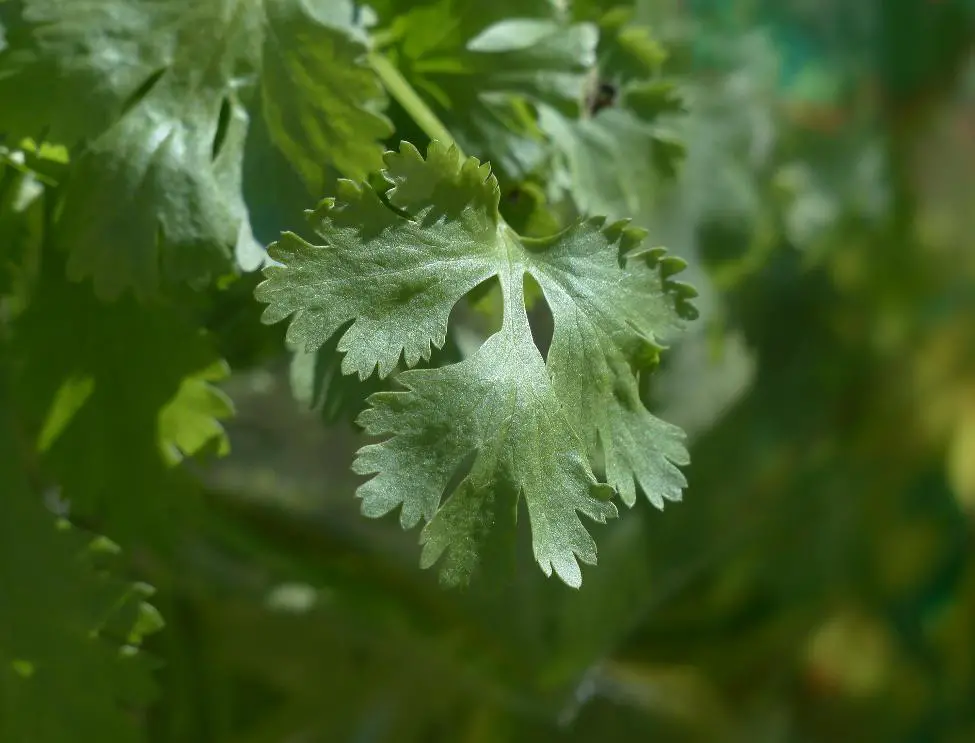This plant is grown for both its distinctively flavoured, delicate leaves and its aromatic, lemony-tasting seeds; their flavours are pretty different. Cilantro leaves (and the roots, which are more intensely flavoured) are highly popular in Chinese and Thai dishes as well as in Indian cooking, which also often uses coriander seeds, either ground or whole.
This herb is also very healthy: it’s rich in vitamin A, vitamin C, calcium, and magnesium. Its medicinal properties are good for discomfort in the stomach and colon as well as for infections.
Steps to regrow cilantro
Find a good spot to regrow your cilantro
The cilantro cuttings will be placed in water for two to three days. The water should be changed every day. New sprouts will develop from the middle. The plant will need a bright spot near a window.
Prepare your cilantro plant
Herbs are your best bet for rooting cuttings in water. A cutting is simply a piece of plant. Stem cuttings include an 8 to 10-cm piece of stem with the growing tip still intact at the top, a few sets of leaves, and a few cm of stem at the bottom of the cutting. It is important to use fresh coriander that still has its roots intact.
If you are taking cuttings from your garden, spring and early summer are ideal, as there will be lots of fresh, young growth. If you plan to regrow from your purchases, while grocery shopping look for cilantro with clean stems.
Prepare the cutting by removing any of the leaves from the bottom 2 to 4 cm of the plant, because they would be underwater in the glass jar. Just pinch off the leaves close to the stem.
Plant your cilantro
If you want your cilantro to grow enough to produce more leaves to harvest, you’ll want to pot them up to enjoy indoors or out.
After a quick stay in the glass of water, the cilantro can be moved to the soil. Here it is essential that the air is humid, so something like a plastic bag, a plastic bottle with the bottom cut off, or a mini greenhouse should be placed over the plant. Don’t forget to water it regularly. It might take a while until you have a fully-grown, bushy cilantro plant in your home.
Harvesting and use
Did you know that coriander seed is actually the seed from a cilantro plant? They have totally different flavours, but if you root a cilantro plant and let it flower, you’ll be able to harvest another part of the plant for use.
You can start harvesting a few leaves at a time once the plants start producing new leaves. Harvest when plants are 15cm tall and leave to regrow. Harvest the seeds in late summer just before they’re ripe and put the seed heads in a paper bag to dry.
Now you can get started in the kitchen with your homegrown cilantro. Nothing beats the flavour of home-grown food.
